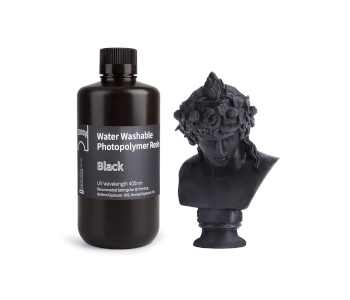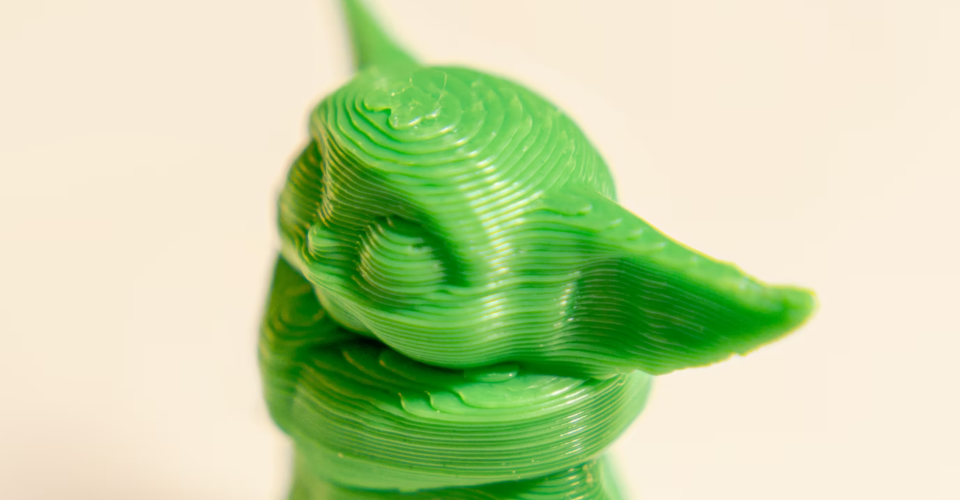Should You Cure Your Resin Prints Underwater?
Post-curing is the extra step that separates resin printing from other 3D printing methods. It is a technique that has been refined through the years yet remains imperfect even when done in a special UV curing box. An alternative method is to cure the resin print while submerged in water.
Submerging a resin underwater limits the amount of oxygen that interferes with the curing process. This results in faster curing and an overall better finish for the cured print. Make sure that you have access to a clear glass container and clear water if you want to try this method.
Despite seemingly great benefits, curing resin while submerged underwater is not very common in the 3D printing community. How exactly does it work, and does it have drawbacks?
Why it works

To understand the method, we again have to go back to the basics of photopolymerization. Recall that liquid resin is made of a mixture of oligomers and monomers. When the resin is exposed to UV radiation, this provides enough energy for the oligomers and monomers to form cross-links, resulting in the resin turning into solid plastic.
According to studies, the presence of oxygen during this reaction acts as an inhibitor to the polymerization process. This is because oxygen molecules tend to react to the oligomers and monomers, making them less likely to form long polymer chains. Oxygen does not completely prevent the process from happening but can significantly slow it down or reduce its degree of completion.
This is the main rationale for submerging resin prints in water while curing. By placing the resin print in an underwater environment, the concentration of oxygen that can inhibit the polymerization process is significantly reduced.
This technique isn’t exactly new. It has been around for several years and has even been recommended by some resin brands. If you find that your resin prints still feel tacky on the surface even after UV curing, then you might want to explore this technique.
Underwater curing procedure
The method does not need any fancy equipment. After you’re done rinsing your resin print in IPA, then just toss them into a clear container with some water. Make sure that the resin print is completely submerged and that both the container and the water are very clear.
Place the container with the water and resin under your standard UV curing setup. This can be a UV curing box or under direct sunlight. There is no need to agitate the container. When using this method, only cure your resin print for half the time it normally takes for it to be fully cured. Overcuring is still possible with this technique.
After that’s done, you should end up with a resin print that has a very firm surface and a clean finish. Pat dry the excess water and allow the remaining water to air-dry.
Pros and cons of curing resin underwater
As with any decision worth making, there are benefits and drawbacks of choosing this technique over others.
PROS
Faster curing
Without the inhibitive effect of oxygen, curing can be done much faster when done underwater. This is a huge help especially if you don’t own a UV curing box.
Better and more consistent quality
Since the absence of oxygen encourages more complete curing, you can expect your resin prints to have smoother surfaces and a cleaner finish. According to the people who have tried it, curing underwater effectively eliminates the feeling of tackiness that is sometimes encountered when curing the traditional way.
Another benefit of curing underwater is that you don’t need to place it inside a rotating turntable to get consistent results. Water is a naturally refractive medium. When UV radiation goes through water, internal reflections alter the angle of the UV beams in different ways. This allows UV radiation to hit the entire surface of the resin print and even permeate into very small spaces.
CONS
Dealing with more waste
If you submerge your resin in water, then disposing of that water will be one more thing that you will need to deal with. As we know by now, uncured resin in any form or concentration can be harmful to humans, animals, and the environment.
Most people who practice this technique typically leave the water container out in the sunlight before disposal. This should result in some plastic particles solidifying, which will then have to be filtered out.
One thing that may make this drawback seem not so bad is the fact that the same water portion can be reused for multiple resin prints. Just keep in mind that the water can get cloudy over time. If you think that the UV radiation can no longer penetrate through the murkiness of the water, then it’s time to use a fresh batch.
Other tips for underwater resin curing
- Tap water usually works just fine for this method. However, you may encounter problems if you use cloudy water or hard water. There have been instances where white or gray deposits formed in the resin, likely as a result of a reaction with calcium. If this happens, you may want to run another trial using distilled or filtered water.
- If you plan to cure your prints under the sun, then it’s best to use water that is slightly below room temperature. This balances out the heat from the sun and keeps the resin from developing a discoloration because of excess heat.
- If you need to handle uncured resin print with your hands, then do so using nitrile gloves. Not only will this protect you from the dangers of skin contact with liquid resin, but will also prevent fingerprints from being left on the tacky surface of the print.
Final thoughts
Most people who do resin printing typically just throw a resin print in a UV curing box for a few minutes and call it a day. It’s such a simple process that rarely anyone questions. However, there is a way that this method can be potentially improved – by submerging the resin print in water.
There is arguably very little downside to submerging your resin print in water while curing. It’s faster, produces a better finish, and costs practically nothing. If you have a resin print planned soon, we suggest testing out this method for yourself.


